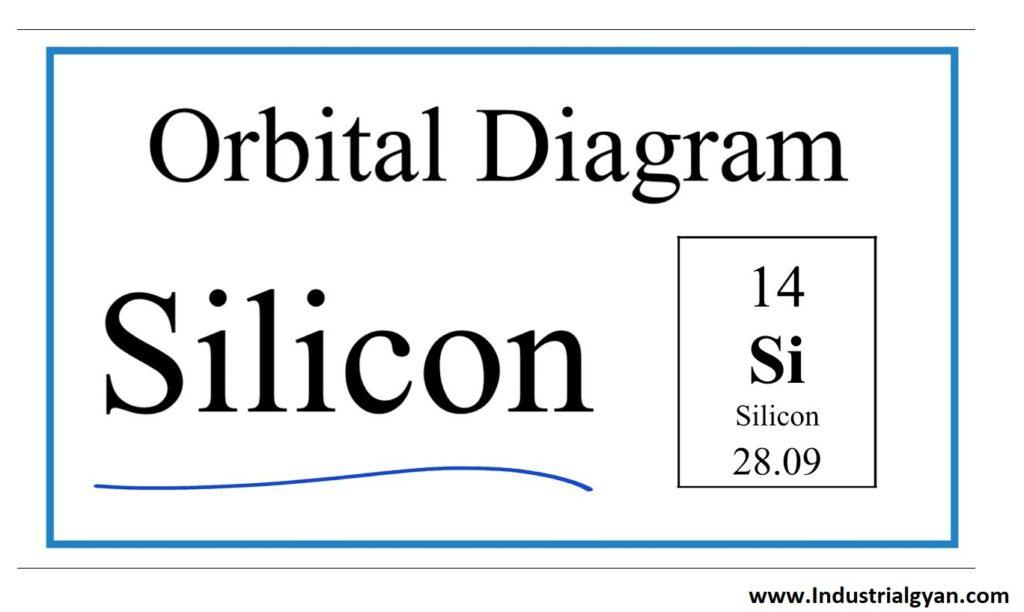Silicon is an element that plays a crucial role in various industries, including electronics, semiconductors, and solar cells. To comprehend the properties and behavior of silicon, it is essential to understand its electron configuration. In this article, we will delve into the intricacies of silicon’s electron configuration and explore its significance in the realm of materials science and technology.
Table of Contents
- Introduction: The Basics of Silicon
- Understanding Electron Configuration
- The Electron Configuration of Silicon
- The Orbital Diagram of Silicon
- The Role of Valence Electrons in Silicon’s Properties
- Silicon’s Electronic Structure and Semiconductor Behavior
- The Impact of Silicon’s Electron Configuration on Its Reactivity
- Silicon Electron Configuration Notation
- Silicon’s Electron Configuration and Its Periodic Table Position
- The Influence of Electron Configuration on Silicon’s Chemical Properties
- Silicon’s Electron Configuration and Band Structure
- Doping Silicon: Modifying Its Electron Configuration
- Silicon Electron Configuration and Its Applications in Technology
- Future Prospects and Advancements in Silicon Research
- Conclusion
1. Introduction: The Basics of Silicon
Silicon, with the chemical symbol Si and atomic number 14, is a nonmetallic element belonging to Group 14 of the periodic table. It is the second most abundant element on Earth, after oxygen. Silicon exhibits both metallic and nonmetallic properties, making it a versatile material with wide-ranging applications.
2. Understanding Electron Configuration
Electron configuration refers to the arrangement of electrons in an atom’s energy levels, also known as shells or orbitals. It provides valuable insights into an element’s chemical behavior and its interactions with other elements. The electron configuration follows specific rules, such as the Aufbau principle and the Pauli exclusion principle, which govern the filling of electron orbitals.

3. The Electron Configuration of Silicon
Silicon has a total of 14 electrons. These electrons are distributed among different energy levels or shells surrounding the nucleus. The electron configuration of silicon can be represented as follows:
1s^2 2s^2 2p^6 3s^2 3p^2
This notation signifies the number of electrons in each energy level and orbital. The superscript numbers denote the number of electrons present, while the letters represent the orbital types (s and p).
4. The Orbital Diagram of Silicon
To visualize the electron configuration of silicon, we can also use an orbital diagram. In this diagram, each orbital is represented by a box, and electrons are depicted as arrows. Following Hund’s rule, electrons will occupy separate orbitals within a subshell before pairing up.
The orbital diagram of silicon can be illustrated as:
5. The Role of Valence Electrons in Silicon’s Properties
Valence electrons, located in the outermost energy level of an atom, play a crucial role in determining an element’s chemical behavior. In the case of silicon, the valence electrons are in the 3s and 3p orbitals. Silicon has four valence electrons, staircase wiring which allows it to form covalent bonds with other elements, particularly carbon.
6. Silicon’s Electronic Structure and Semiconductor Behavior
The electronic structure of silicon, with its four valence electrons, gives rise to its semiconductor properties. Silicon atoms can bond together through covalent bonds, forming a crystalline structure. This arrangement enables silicon to have a bandgap, which allows for controlled conductivity.
In its pure form, silicon acts as an intrinsic semiconductor. However, by introducing impurities through a process called doping, the electrical conductivity of silicon can be modified to create either n-type or p-type semiconductors, depending on the type of impurity added.
7. The Impact of Silicon’s Electron Configuration on Its Reactivity
The electron configuration of silicon influences its reactivity and chemical behavior. Silicon is relatively unreactive under normal conditions due to its stable electron configuration. It does not readily form compounds with most elements, latching current except for a few exceptions.
![]()
8. Silicon Electron Configuration Notation
The electron configuration of silicon can be represented in a shorthand notation using the noble gas configuration. Since silicon follows neon (Ne) in the periodic table, we can represent its electron configuration as [Ne] 3s^2 3p^2. This notation highlights the core electrons (those present in the noble gas) and the valence electrons in the outermost energy level.
9. Silicon’s Electron Configuration and Its Periodic Table Position
Silicon’s electron configuration reflects its position in the periodic table. It belongs to Group 14, which consists of elements with four valence electrons. The electron configuration of silicon is similar to other elements in the same group, such as carbon and germanium, but with variations in the principal quantum number.
10. The Influence of Electron Configuration on Silicon’s Chemical Properties
The electron configuration of silicon significantly influences its chemical properties. Silicon’s ability to form covalent bonds and its stable electron configuration contribute to its excellent thermal and chemical stability. These properties make silicon suitable for applications in electronics, where stability and reliability are crucial.
11. Silicon’s Electron Configuration and Band Structure
Silicon’s electron configuration plays a vital role in determining its band structure. The band structure describes the allowed energy levels for electrons in a solid material. In silicon, the valence band and conduction band are separated by a bandgap, which makes it an ideal material for semiconductors.
12. Doping Silicon: Modifying Its Electron Configure
Doping is a process used to modify the electron configuration of silicon by intentionally introducing impurities. Two common types of dopants used in silicon are boron (for p-type doping) and phosphorus (for n-type doping). By altering the electron configuration through doping, the electrical conductivity and other properties of silicon can be tailored for specific applications.
13. Silicon Electron Configure and Its Applications in Technology
Silicon’s unique electron configuration and semiconductor properties make it indispensable in various technological applications. It forms the basis of modern electronics, serving as the main component in integrated circuits, transistors, and microchips. Silicon also finds applications in photovoltaic devices, where it converts sunlight into electricity in solar cells.
14. Future Prospects and Advancements in Silicon Research
As technology continues to advance, silicon research and development remain active areas of exploration. Scientists are continually investigating ways to enhance silicon’s properties, improve its efficiency in electronic devices, and explore new applications. Emerging fields such as silicon photonics and quantum computing hold great promise for the future of silicon-based technologies.
15. Conclusion
In conclusion, understanding silicon’s electron configuration is vital for comprehending its behavior and properties. The electron configuration of silicon, with its four valence electrons, enables its role as a semiconductor and its widespread use in electronics and technology. By modifying silicons electron configure through doping, its conductivity and other properties can be tailored for specific applications. Silicon
You can follow us on LinkedIn

I am a highly motivated and skilled individual with a passion for Electrical engineering. I have 1 year of experience in Robotics and Electrical engineering, which has allowed me to develop a strong set of skills in PLC, Painting Robots, SCADA. I am a quick learner and am always looking for new challenges and opportunities to expand my knowledge and skills. I am a team player and enjoy working with others to achieve a common goal. Successfully completed many projects for a various clients in the automobile sector.
Thank You

